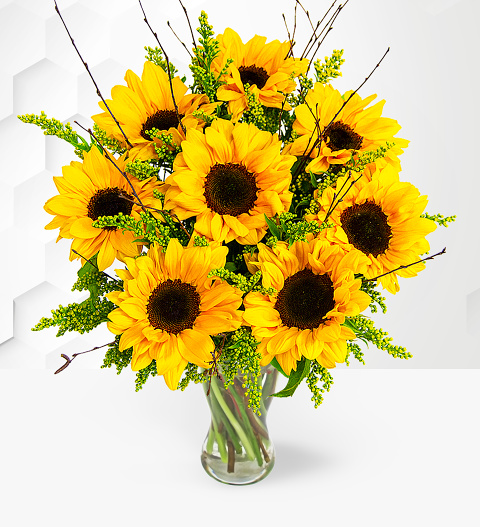
Flower types in every bouquet
No matter the style of your bouquet, when you order flowers, you can be sure that there are several visual elements at play. Different types of blooms play different roles in a fresh flower arrangement. By understanding these roles, you too can create your own fabulous displays. Of course, there are some exceptions to these ‘rules’. For instance, some bouquets only include a single type of flower without the addition of foliage or other blooms. Floristry is a form of art and this is why there is always room for interpretation.
Line flowers
One of the most impressive flower types of all are line flowers. These blooms have the longest stems of all and they can be placed in a bouquet to define its shape. It can be thought of as a kind of outline for the bouquet. They are most often used in vertical and horizontal arrangements. Examples include snapdragons, gladiolus and delphiniums.
Focal flowers
As the name suggests, these blooms will grab your attention. Of all the flower types, this is the one you cannot miss. They are usually the largest and brightest in the bunch. When you look at a bouquet, it’s most likely that you will spot them first. Examples include roses, carnations and lilies.
Fillers
Mass flowers and filler flowers are two flower types that play a similar role but are not entirely the same. Mass flowers give your bouquet more volume while filler flowers fill in any gaps. Filler flowers, like wax flowers and baby’s breath are the smallest of all blooms. Depending on the size of the rest of the flowers, carnations can be considered mass flowers too. For instance, if you have oriental lilies as focal flowers, you can add roses as mass flowers along with some filler flowers and foliage to complete the bouquet.
Foliage
When your blooms are all arranged, all you need to do is add foliage! Greenery is not a must but it can really help bring a bouquet together. Make sure that you don’t select just one type of foliage. You should include two or three types and they should be similar in shape to the leaves on the flower stems you’ve used.
These are all the basic flower types you need to know about when arranging a bouquet. You do not need to use all of them in every bouquet you create. Sometimes, all you need is to combine some mass flowers with filler flowers (roses and baby’s breath) or even stick to focal flowers (lilies) with a hint of foliage.
